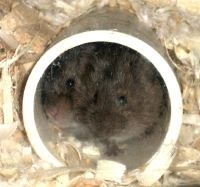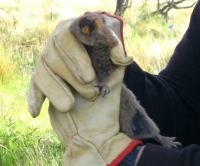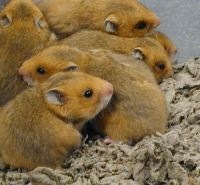Species differences in neuropeptides and social behavior
I conducted field work in South America in order to compare the oxytocin receptor systems of social and nonsocial with the genus Ctenomys -- a species-rich group of burrowing rodents known as tuco-tucos. My initial work focused on a solitary and a social species that share similar habitats in the Limay river valley of Argentina. I am currently studying a broader range of tuco-tucos from Argentina, Uruguay, and Peru.
Beery AK, Lacey EA, Francis DD (2008) Oxytocin and vasopressin receptor distributions in a solitary and a social species of tuco-tuco (Ctenomys sociabilis and Ctenomys haigi). Journal of Comparative Neurology. 507: 1847-1859.




